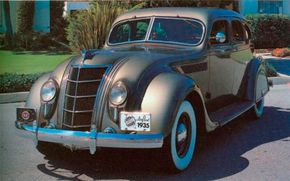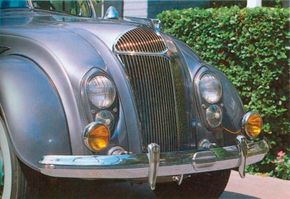The 1934-1937 Chrysler Airflows were called "the most influential car(s) of the 1930s." And no doubt it was -- but in its own time Airflows very nearly spelled disaster for Chrysler.
Advertisement
It was Carl Breer, one of the "Three Musketeers" of Walter P. Chrysler's great engineering triumvirate, who supplied the inspiration for the project. According to company legend, one day Breer was watching what he took to be a flock of geese in flight. But as they approached he came to realize that what he was seeing wasn't geese; he was observing a squadron of military aircraft on maneuvers.
It was one of those illuminating moments. If the airplane, or for that matter the bird, was shaped in such a way as to minimize wind resistance, could not the same principle be applied, Breer wondered, to ground transportation: to trains, to trucks, to passenger cars? Especially to passenger cars, for by that time (late 1927) some of the better automobiles were capable of speeds as high as 80 or even 90 miles per hour. Breer was just beginning to recognize the handicap posed by wind resistance.
With Walter Chrysler's blessing, work got under way on the development of a streamlined automobile. A wind tunnel was constructed at Dayton, Ohio, and there Breer and his cohorts, Fred Zeder and Owen Skelton, undertook their research under a cloak of secrecy.
By the end of 1932, a prototype was on the road. Dubbed the "Trifon Special" in honor of an engineering laboratory employee, it was a semi-fastback four-door sedan. Carl Breer had originally proposed seating for three in front, two in the rear, but that idea was quickly shot down by the marketing people.
However, many of Breer's other proposals were incorporated into the Trifon Special. For instance, passengers were moved forward 20 inches from their traditional position. This had the effect, first, of reversing the previous weight distribution of approximately 45-percent front, 55-percent rear.
Second -- and even more importantly -- this positioning cradled all the passengers within the axles, largely eliminating the bouncing sensation that had typically been experienced by rear-seat occupants. And finally, it made possible the use of roomy, 50-inch-wide seats.
On the next page, learn about the structure of the Chrysler Airflow.
Want more information on cars? See:
- Classic Cars
- Muscle Cars
- Sports Cars
- Consumer Auto Guide
- Consumer Auto Guide Used Car Search
Advertisement


